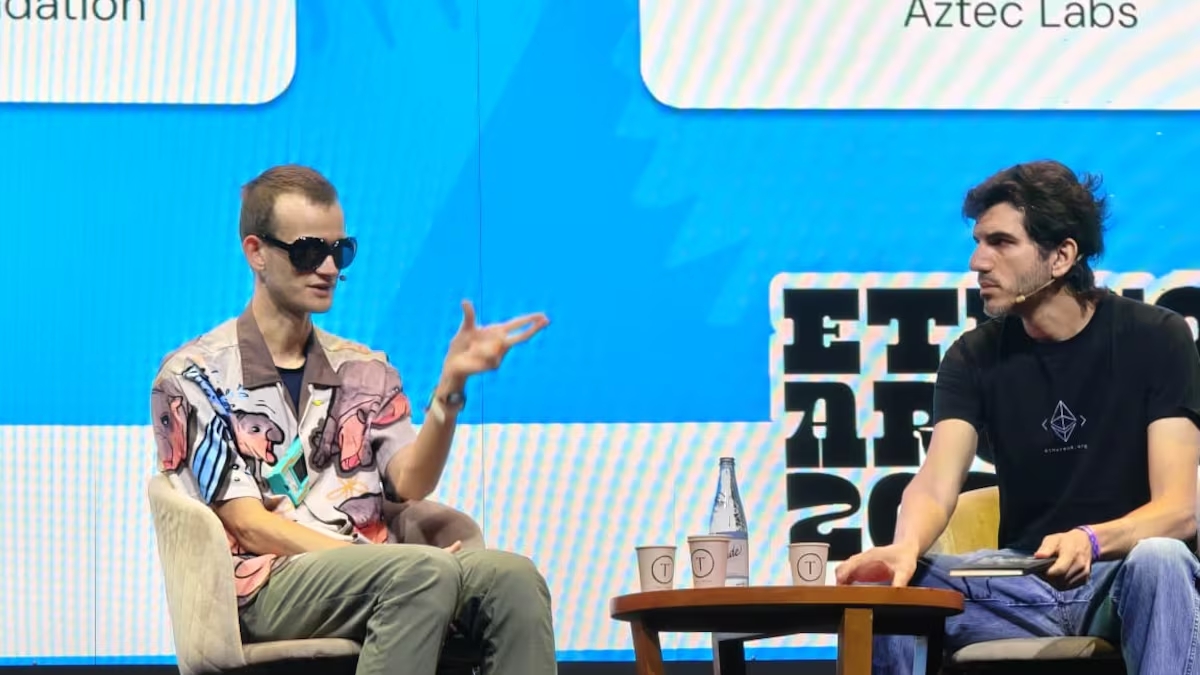The Shift Toward a More Stable Ethereum
At Devconnect 2025 in Buenos Aires, Vitalik Buterin delivered one of the most defining messages Ethereum has heard in years. Instead of promoting another wave of rapid protocol upgrades, he argued that the next phase of Ethereum’s evolution requires something surprising in a traditionally experimental industry: the base layer should become harder to change.
Vitalik described this as “ossification,” a term that has been circulating among developers for years but rarely appeared as the central theme of a keynote. His message was clear: the foundation that now secures billions in value must prioritize reliability and predictability. Just as the internet’s underlying protocols stabilized over time, Ethereum’s L1 should shift from active construction to long-term stewardship.
However, this does not signal the end of progress. Instead, Vitalik emphasized that innovation should increasingly occur on Layer 2 systems, infrastructure tooling, and emerging decentralized application frameworks. These layers can continue evolving rapidly without compromising the stability of the core protocol.
Why Less Change Can Mean More Progress
In a space defined by speed and experimentation, the idea of slowing core protocol changes may feel counterintuitive. Yet Vitalik argued that Ethereum has reached a stage where stability becomes a competitive advantage. A mature blockchain requires clear expectations for developers, institutions, and users. Constant rule changes threaten confidence, while a reliable protocol strengthens it.
Still, stability does not imply stagnation. A layered architecture allows Ethereum to preserve its role as a secure settlement layer while encouraging experimentation elsewhere. Scaling improvements, privacy solutions, account abstraction, and new execution models can continue advancing, but without depending on disruptive L1 modifications.
Over time, this structure reinforces Ethereum’s identity: the protocol becomes a permanent pillar, while the application ecosystem continues moving quickly.

Security, Trust, and the Post-FTX Reality
Another theme of Vitalik’s talk reflected on failures of centralized systems. He noted that events like the collapse of custodial platforms demonstrate why decentralization matters. A trustless system exists specifically to prevent single points of failure, regardless of reputation or scale.
Vitalik referenced the principles behind the recently discussed “Trustless Manifesto,” which argues that systems cannot rely on privileged intermediaries, hidden custodianship, or unverifiable components. A truly decentralized network must resist fragility, even when centralized solutions appear efficient.
This reinforces why ossification is not just technical—it is ideological. A stable, transparent foundation supports the long-term goal of minimizing trust in intermediaries.
Quantum Risk and the Long-Term View
Vitalik also addressed a challenge that remains distant but unavoidable: quantum computing. While no one can predict the exact timeline, he stressed that Ethereum should not assume today’s cryptographic standards will remain secure forever. Preparing for a migration to quantum-resistant systems requires foresight, research, and patience.
This is not an urgent crisis, but a strategic responsibility. By planning ahead, Ethereum can evolve smoothly rather than reactively.
Ethereum’s Role in a Global Digital Economy
Beyond technical direction, Vitalik described Ethereum’s expanding role in digital infrastructure. As applications like decentralized finance, digital identity, tokenized assets, and public goods funding continue to grow, Ethereum increasingly resembles an essential global network rather than an experimental blockchain.
Scaling through rollups, improving onboarding experiences, and enabling privacy-preserving transactions are all part of making Ethereum accessible to broader audiences. The network’s evolution now involves balancing usability with decentralization—ensuring growth does not compromise core principles.
A New Governance Philosophy
Vitalik also challenged assumptions about governance. Instead of building more formal authority structures over time, he argued that a well-designed base layer should require less governance intervention. Constant decision-making risks consolidating power, and centralized direction undermines Ethereum’s long-term decentralization goals.
A mature protocol should operate with minimal adjustments, while community-led innovation continues at the edges.
Where Innovation Moves Next
With L1 stability becoming a priority, innovation will increasingly move into areas such as:
- •Layer 2 scaling ecosystems
- •Developer infrastructure and tooling
- •Wallet and identity improvements
- •Zero-knowledge technology and privacy research
- •New marketplace and coordination models
This shift does not limit creativity—it focuses it.
Why This Moment Matters
The tone of Vitalik’s Devconnect keynote was grounded and forward-looking. Rather than chasing rapid reinvention, Ethereum is transitioning into a resilient, long-term system—built not just for the next market cycle, but for decades of use.
Ethereum is entering a new phase: less about rebuilding the foundation, and more about building on top of it.

